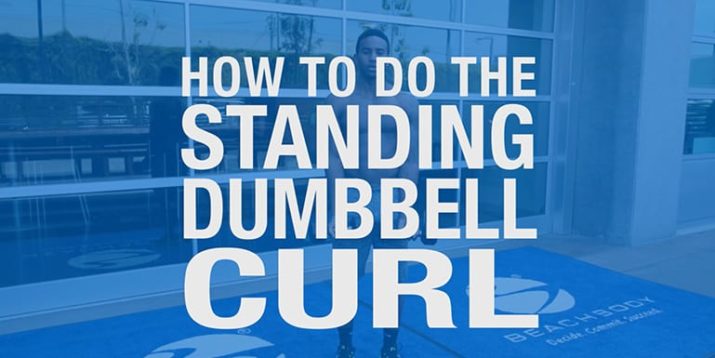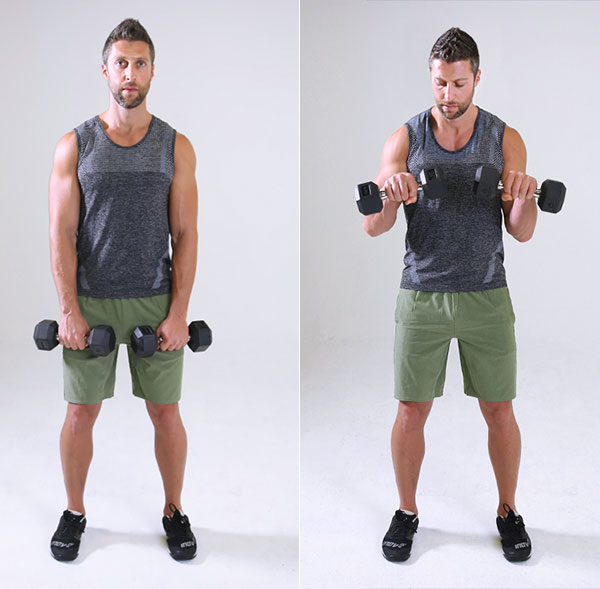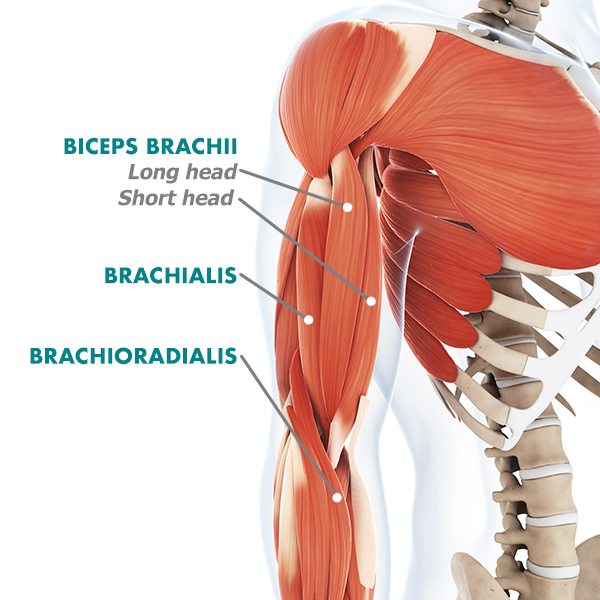How to do the Dumbbell Biceps Curl (Video)

Compound exercises that involve multiple joints and hit multiple muscle groups at once – like the squat and deadlift – might be the most efficient for building overall strength.
But isolation exercises — moves that zero in on one muscle at a time — can be a useful addition to a strength program. Especially if you’re chasing a bigger set of guns, the biceps curl is a great isolation exercise to add to your workouts.
That’s because few moves target your biceps muscles more effectively than the classic dumbbell biceps curl, says Trevor Thieme, C.S.C.S.
And incorporating the dumbbell curl into your strength training routine is easy – all you need is a pair of dumbbells!
If you don’t have weights on hand, you can use resistance bands to get the job done.
Here’s how to do a dumbbell biceps curl with proper form, and some tips on getting the most out of this move.
Dumbbell Biceps Curl: Step-by-Step Instructions
Appears in: The Master’s Hammer and Chisel >> Hammer Build Up
- Grab a pair of dumbbells and let them hang at arm’s length by your thighs, palms facing forward.
- Keeping your elbows tucked and your upper arms locked in place, curl the dumbbells as close to your shoulders as you can.
- Pause, and then slowly lower the weights back to the starting position.
Tips: Avoid using momentum to lift the dumbbells to ensure that your biceps are doing most of the work. Also, after the point of peak contraction, lower the weights slowly in order to increase the biceps’ time under tension (a key growth stimulus).
How Much Weight Should I Use for Biceps Curls?
When doing a biceps curl (or any weightlifting move for that matter), choose a weight that challenges you, yet still allows you to complete all your reps and sets with proper form.
We know that’s vague advice, but every body is different, and the best weight for you is likely different than the best weight for your training partner.
Progress at your own pace. If you’re new to biceps curls, though, start with lighter weights like 10 pounds to ensure that you’re doing the move with proper form.
Then, you can increase the weight as you gain more strength and become more proficient at the movement pattern.
How to Make the Biceps Curl Easier or Harder
There are a few tweaks you can apply to the classic biceps curl to make the move easier or harder. You’ll still work the same muscles, just in different ways and/or intensities.
Make it easier:
- Use lighter weights.
- Perform an alternating dumbbell curl, lifting one dumbbell at a time.
Make it harder:
- Use heavier weights.
- Slow your lifting tempo.
- Do a dumbbell single-arm isometric curl. Assume the same starting position as the standing dumbbell curl, and curl the weight in your left hand until your elbow is bent 90 degrees. Hold that position as you do reps with your right arm. Once you complete all of your reps with your right arm, hold it at a 90-degree angle, and do an equal number of reps with your left arm.
Bonus Tips for the Biceps Curl
- Don’t use momentum. If you need to rock forward and backward to curl the dumbbells, it means they’re too heavy and you should grab a lighter set.
- Keep your elbows glued to your sides during the movement. “The only parts of your body that should be moving are your hands and forearms,” Thieme says.
Biceps Curl Variations
Aside from the classic dumbbell biceps curl, there are many variations you can incorporate into your routine in addition to those mentioned above.
Some variations include the seated biceps curl, resistance band biceps curl, barbell biceps curl, and hammer curl.
Each variation will work your muscles in slightly different ways.
“Weave a couple [variations] into your program, and when your gains begin to slow, swap them out for different variations,” Thieme says.
1. Reverse curl

- Stand with feet hip width apart holding a dumbbell in each hand, arms by your sides, palms facing behind you.
- Keeping the elbows tucked, slowly curl the weights up slightly above 90 degrees.
- Reverse the move to return to the starting position, and repeat.
2. Preacher curl
Appears in: Sagi’s BOD exclusives >> Bis and Tris
- Position yourself on a preacher curl bench with your triceps resting on the pad and your elbows bent holding an EZ bar with both hands using an underhand grip.
- Lower the bar, stopping just before your elbows lock out.
- Curl the bar back up to the starting position, and repeat.
3. Dumbbell hammer curl
The hammer curl is similar to the regular biceps curl, with a few variations.
In this exercise, you keep your palms facing in towards your body throughout the movement. This will work your brachialis and brachioradialis muscles as well as your biceps.
- Stand with a dumbbell in each hand, arms at your sides, elbows close to the body, and palms facing in (as if you’re hammering nails).
- Letting the elbows stay close to the body, bend at the elbow and raise the dumbbells up toward your shoulders until they are almost level with them.
- Pause for a second before lowering back down to starting position (keeping tension on the weights).
4. Zottman curl
Appears in: Clean Week >> Strength
- Stand tall holding a dumbbell in each hand at arm’s length by your sides, palms facing forward (underhand grip).
- Keeping your elbows tucked and locked by your sides, curl the weights toward your shoulders.
- Flip your grip 180 degrees (to overhand), lower the weights back down to your sides, and then flip your grip again (to underhand) to return to the starting position.
5. Concentration curls
Appears in: Body Beast >> Bulk Arms
- Sit in a chair with your feet flat, your knees spread wide, and a dumbbell in your right hand.
- Bend forward and brace the back of your right elbow against the inside of your right knee. Your right arm should be vertical, with your right palm facing toward you.
- Keeping your upper body still, your elbow against your knee, and your palm facing inward, curl the weight toward your shoulder.
- Pause and then reverse the movement to return to the starting position.
- Do all of your reps, switch sides, and repeat, performing an equal number of reps with each arm.
Benefits of Bicep Curls
Strong biceps not only look good, but they can also be a huge help in your daily life since they help you perform everyday tasks more efficiently.
“Your arms are your primary tools for interacting physically with the outside world,” Thieme says.
Just think about how often you have to engage your arm muscles — lifting a child, pulling open a heavy door, moving furniture, picking up and putting down bags of groceries — all of these tasks are a lot easier with strong biceps, which can be built with the help of biceps curls.
Some of the best benefits of bicep curls are:
- Strength
- Hypertrophy
- Isolation
- Aesthetics
What Muscles Do Biceps Curls Work?

Like the name suggests, “biceps curls” works your biceps muscles.
Since it only involves one joint and targets only one muscle, it’s classified as an isolation exercise — but that doesn’t mean that the biceps are the only muscles worked.
Your brachialis and brachioradialis — two other elbow flexors — assist your biceps.
Muscles in your forearms spring into action to stabilize your wrist and strengthen your grip. And muscles throughout your core and back engage to keep you stable.
Still, you’ll notice the effects of the exercise most in its primary drivers: Your biceps.
While the biceps (or more specifically, the biceps brachii) is not actually attached to the humerus, you’ll find this muscle on the front of the upper arm.
It’s comprised of two heads – the short head and the long head – that work to flex the arm at the elbow.
The biceps is also responsible for the supination (i.e. outward rotation) of the forearm.
The short and long head originate separately at the scapula and fuse together to attach to the upper forearm.
